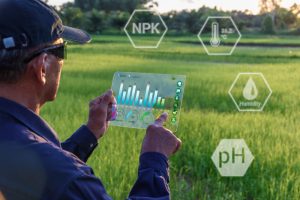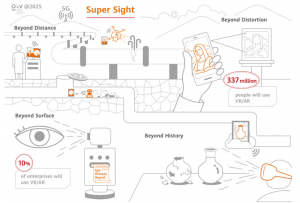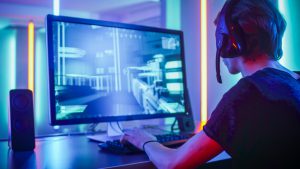In case this may be of interest or useful..
blog.huawei.com/2020/06/03/what-the-pandemic-means-for-technology-acceleration/
What the Pandemic Means for Technology Acceleration
ByAdam Lane
June 3, 2020
As countries start to come out of lockdowns, or loosen other restrictions, what might the world look like and how might technology play a role?
Education
It looks like around the world some students will be going back to school earlier than others whilst some will be taking it in turns in order to ensure classrooms are not so crowded. Whether this is a rotation on a daily, weekly, bi-weekly or other basis, it has important implications for the use of technology for teaching. Some students will be studying online at home, some may not have access to technology to do so (or not have the caregivers available to support this), and others may be at school. Each of these groups will have different experiences, and technology will need to adjust to try to keep each at the same pace as the others.
This means that just watching recorded videos or doing online worksheets will not be enough. Those at home need to be getting the same experience as those in class. This requires live teaching using video conference software and interactive whiteboards in schools. In the short-term this might be possible just using tablets or PCs, but in the medium-term, professional interactive whiteboards with video conference functions would be preferable, and probably with one camera at the back of the classroom looking towards the teacher as well.
In much of the world, if schools are not already online, they can get online fairly easily using a CPE<consumer.huawei.com/en/routers/5g-cpe-pro/> (or a modem with a SIM card), particularly the outdoor type, and use a 4G or 5G signal. In the long-term, schools can benefit from the deployment of fiber or use microwave connections . In emerging economies where some schools may not have internet coverage, the live teaching will have to be from schools or other government buildings that do have coverage, whilst expanding connectivity over time to other locations, for example through a low-cost base station such as the Rural Star.
After COVID passes, those interactive whiteboards and internet connections will continue to be useful, enabling access to the Internet in class and use of videos and other content, accelerating the transition to blended learning<blog.huawei.com/2018/10/04/is-education-today-delivering-the-skills-we-need-tomorrow/> that is already underway. Meanwhile a whole generation of children will have become accustomed to online learning, and there will be a huge library of content that will have been created that can be used.
Read more: How school moved to cloud this semester<www.huawei.com/en/about-huawei/publications/winwin-magazine/36/cloud-based-classroom-amid-virus-outbreak>
Health
* [https://blog.huawei.com/wp-content/uploads/2020/02/shutterstock_1644744847.jpg]
As countries around the world explore the use of different apps to trace contacts, these apps can also be linked into public health hotlines for voice or video consultations and telemedicine – not just for COVID-related issues, but for any health issues. If many residents download these apps, it will dramatically speed-up what was already becoming a trend pre-COVID.
Countries are hiring armies of contact tracers, supercharging community health workers, and arming them all with smartphones and apps to manage their contact tracing as well as providing online training materials and communication tools for peer discussion and engagement with central ministries. There has been at least a decade’s efforts in the developing world to digitalize the health workforce, but it has been a struggle. No longer. Now the urgency of the effort during the pandemic will require digitalization. From a fairly limited remit, it will be possible to expand the application and roles of the digital tools from just a response to COVID-19 to the whole gamut of health data collection and community information-sharing, from nutrition to STDs, vaccines and non-communicable diseases.
Hospitals and their labs, especially in the developing world which was mostly paper-based, are being upgraded to ensure the rapid collection of medical data to quickly diagnose and flag potential COVID cases, as well as transmit test results, and even use AI and machine learning tools to predict the spread of the virus. These systems may be fairly limited now, but they can be upgraded and expanded to be more comprehensive. Video conference facilities are being installed, and health workers are becoming more used to using them for training.
There has been a huge boon in private telemedicine and e-pharmacy services around the world, partly helped by governments issuing temporary or emergency legislation such as accepting e-prescriptions, or managing liability for online consultations allowing such services where before there was hesitation. It will be hard to remove these even after everything eventually returns to normal, when citizens have become accustomed to them, and regulators realize their previous reservations have been overcome. These must become permanent to enable dramatic increases in access to healthcare.
Read more: How telemedicine can help combat the pandemic<www.huawei.com/en/about-huawei/publications/winwin-magazine/36/telemedicine-case>
Politics
For centuries politicians have had to physically be present inside buildings to hold debates and to vote. For various reasons, they have been slow to adapt to technology until COVID-19 arrived and forced change. These changes are likely to continue, with politicians using video-conference facilities and online voting software. It may help open up politics further to younger generations. Will politicians have to keep travelling so frequently between constituencies and parliaments? And what about all those international trips for conferences, especially considering climate change?
Media
The media industry has been turned upside down, with traditional approaches of mostly having guests come to studios being replaced by guests recording from home. New forms of concerts, music, and theatre are being developed, with participants performing remotely and synching together, something that is much easier now with 5G and fast fiber. As latencies reduce further, and speeds increase, this will become more common and not just for domestic, but also international media events.
[https://blog.huawei.com/wp-content/uploads/2020/06/shutterstock_1252038760.jpg]
Will there be a return to cinemas in the future? Will everyone who has signed up to streaming services keep their subscriptions? These questions were already being asked pre-COVID, and will certainly come to the fore in the next few months.
Agriculture
Agricultural systems have become quite resilient, and technology has helped ensure that delivery and supply chains have remained generally intact during COVID-19. Social distancing has supercharged e-commerce, forcing more retailers online, as well as wholesalers and distributers. Supply chains have become more diverse and technology will help manage this more in the future, with data analytics and IoT helping track products and commodities, as well as predicting and managing risks.
[https://blog.huawei.com/wp-content/uploads/2020/06/shutterstock_1129777829.jpg]
Tourism
Tourism has taken a massive hit, and the paths to slowly opening up may require carefully planned trips, with frequent testing, with fairly limited movement in case of spreading or picking up the virus. It is likely that a number of IoT products will be developed to help track tourists (with geofencing functions as well as the ability to trace contacts), who will happily temporarily consent to these in order to have a vacation.
[https://blog.huawei.com/wp-content/uploads/2020/06/shutterstock_1172512777.jpg]
Meanwhile, tourism destinations may look to enhance their offerings using AR and VR when there may be limited contacts with locals or limits on certain destinations. Such tools will be crucial in marketing efforts, and – in conjunction with the increasing maturity of cloud VR powered by 10G PON and gigabit broadband – will lead to the growth of the consumer VR industry.
Read more: China Telecom Sichuan powers cloud VR with dual-gigabit services<www.huawei.com/en/about-huawei/publications/communicate/88/china-telecom-sichuan-cloud-vr-dual-gigabit>
Huawei Global Industry Vision 2025: Super Vision<www.huawei.com/minisite/giv/cn/predictions.html?id=2>
[https://blog.huawei.com/wp-content/uploads/2020/06/giv.png]
Retail
Retail has of course been moving online rapidly in many countries. During COVID-19 new products that people rarely bought online are now being tried out and then bought online, even products such as furniture or entire houses. Real estate agencies that had not used VR, 360 or 3D technologies to showcase their properties will have to develop those rapidly, and they may become the norm in the future – at least a bare minimum before someone physically visits a house. For products like furniture or furnishings, there may not be a return to physical retail outlets, especially with new AR capabilities on smartphones that will help place items in homes virtually first.
Where people do return to the high street it may be driven a lot more by experiences than by shopping, though even some of those may be moving online. Activities such as Escape Rooms may take place virtually sooner than we think.
Gaming
Online gaming had been growing significantly, especially in countries without high-end PCs, thanks to the growing capabilities of fairly cheap smartphones and tablets. Large industry players have already developed advanced online platforms for gaming which have been in great demand so far. It is likely that this will continue in the future as social distancing continues and continue to be a big growth industry, particularly with the advent of platforms that don’t require downloading games first now that Internet speeds and latencies, especially with 5G rollout, are good enough to stream directly from cloud.
[https://blog.huawei.com/wp-content/uploads/2020/06/shutterstock_1146784925.jpg]
Read more: Thailand’s 3BB wins gamer market with smart home broadband<www.huawei.com/en/about-huawei/publications/communicate/88/thailand-3bb-wins-gamer-market-smart-home-broadband>
There is no doubt that all the lives lost, the jobs lost, and the disruption to lives of almost every person on this planet in the last 6 months have been awful. But it is also clear that the availability and ability of technology has helped mitigate some of these affects. Many people may not know the term “digital economy” but during recent months of social distancing, almost everyone has now become a part of the digital economy. As we look to the future, tentatively and cautiously, since there is still no sign that we will go back to normal anytime soon, we have a choice as to how we will take advantage of technology to return our economies to growth, and by accelerating already existing trends, kick-start vital industries that are the source of jobs. We need to analyze each industry in our local economy and think how technology can contribute to re-establishing them and creating a base for expansion in the future of the digital economy.
The investment in ICT infrastructure in the last decade or two has held up well. Now is the time to accelerate that investment, applications that bring economic, social and environmental benefits, and the digital skills to take part in the digital economy.
_______________________________________________
kictanet mailing list










